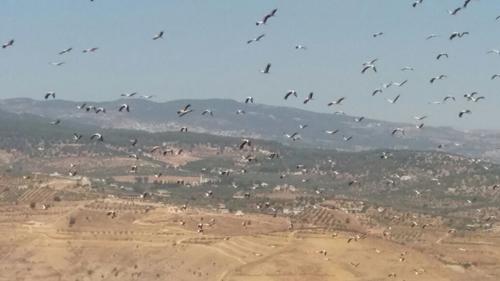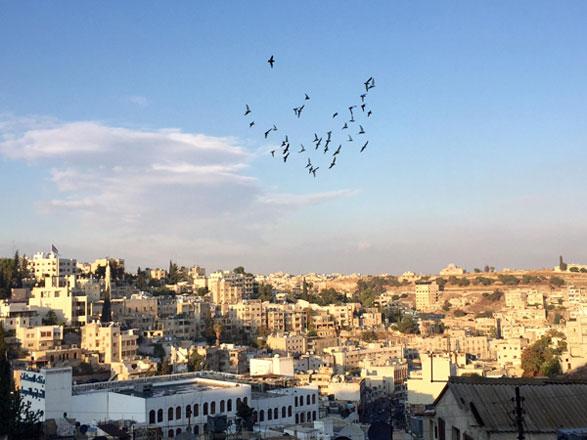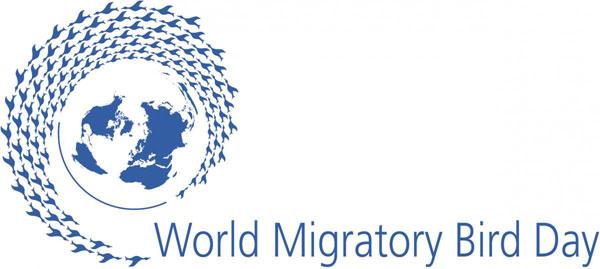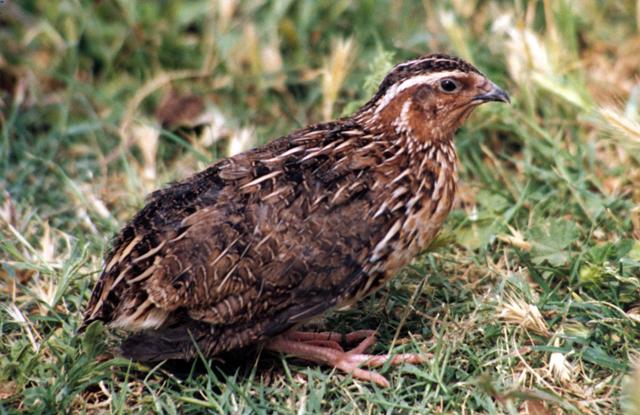You are here
Sightings of white storks signal autumn’s arrival — RSCN
By Hana Namrouqa - Sep 04,2016 - Last updated at Sep 04,2016

Thirty-seven types of migratory soaring birds, which maintain flight by using rising air currents, travel on the Rift Valley-Red Sea flyway annually (Photo by Ahmed Bani Mustafa)
AMMAN — Sightings of flocks of white storks across the country’s skies usher in the start of birds’ autumn migration season, a conservationist said on Sunday.
There have been multiple sightings of the white stork across the Kingdom since late July, said Abdul Razzaq Hmoud, director of conservation and hunting regulation at the Royal Society for the Conservation of Nature (RSCN).
“It is a good sign that white storks are crossing the country in large numbers,” Hmoud told The Jordan Times.
With the start of birds’ migration season, the RSCN will intensify its inspections in areas where migratory birds rest to prevent their hunting.
“The RSCN distributes a schedule to hunters indicating which bird species they are permitted to hunt and at which periods of the year as part of its hunting regulation,” Hmoud noted.
He underscored that the society’s inspectors also raise hunters’ awareness of the need to avoid hunting certain species, noting that those who kill migratory birds are fined.
Migratory birds in the northern hemisphere start flying south in autumn. On their way, they stop in places like Jordan to rest and drink water.
The period that migratory birds spend in Jordan depends on the availability of green cover and wetlands, according to the RSCN, which said that birds were attracted to the reflection of water while flying.
The Rift Valley-Red Sea route is the world’s second most-used flyway, with more than 1.5 million birds crossing it during migration seasons in spring and autumn.
Thirty-seven types of migratory soaring birds, which maintain flight by using rising air currents, travel on the Rift Valley-Red Sea flyway annually, according to the RSCN.
At least five of these are globally endangered — white and black storks, buzzards, eagles and vultures.
The area west of the Hijaz Railway track and the Eastern Badia is the designated bird hunting area in the Kingdom, while the desert area is off-limits to hunters all year round due to the scarcity of avian species inhabiting the region.
Related Articles
AMMAN — With the start of birds' migration season, the Royal Society for the Conservation of Nature (RSCN) said Tuesday it will intensify in
AMMAN — The Royal Society for the Conservation of Nature (RSCN) will fly 500 kites at an event in Aqaba on Wednesday to mark World Migratory
The Royal Society for the Conservation of Nature (RSCN) has announced the opening of hunting season for quails, which are hugely sought after by hunters.



















